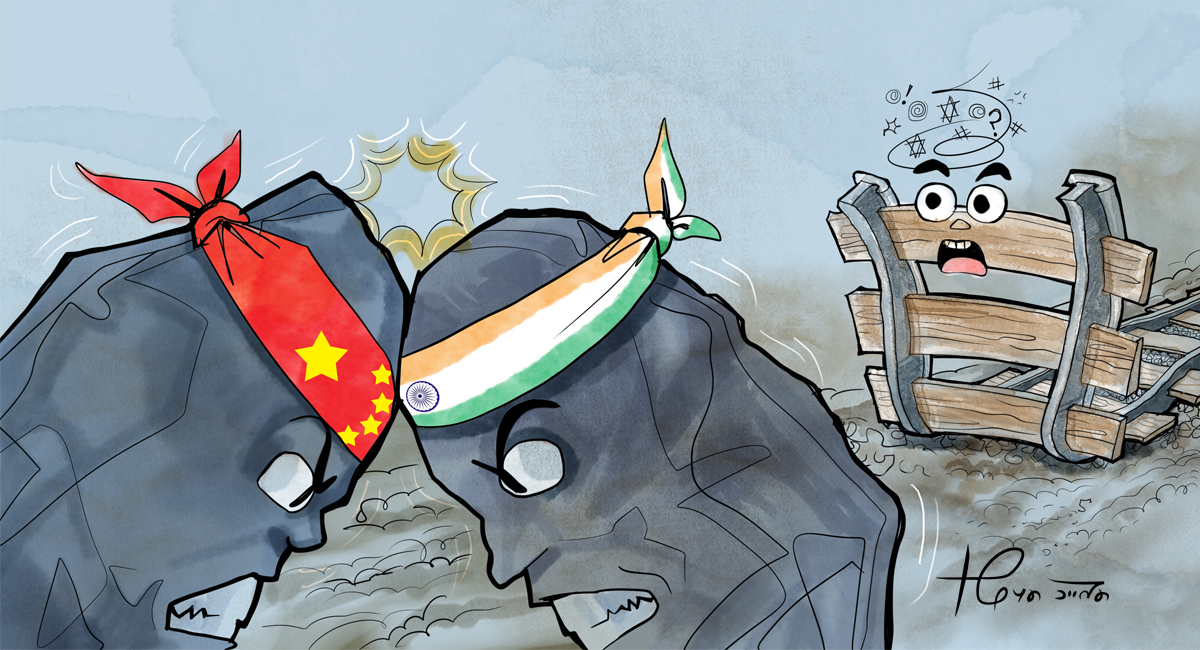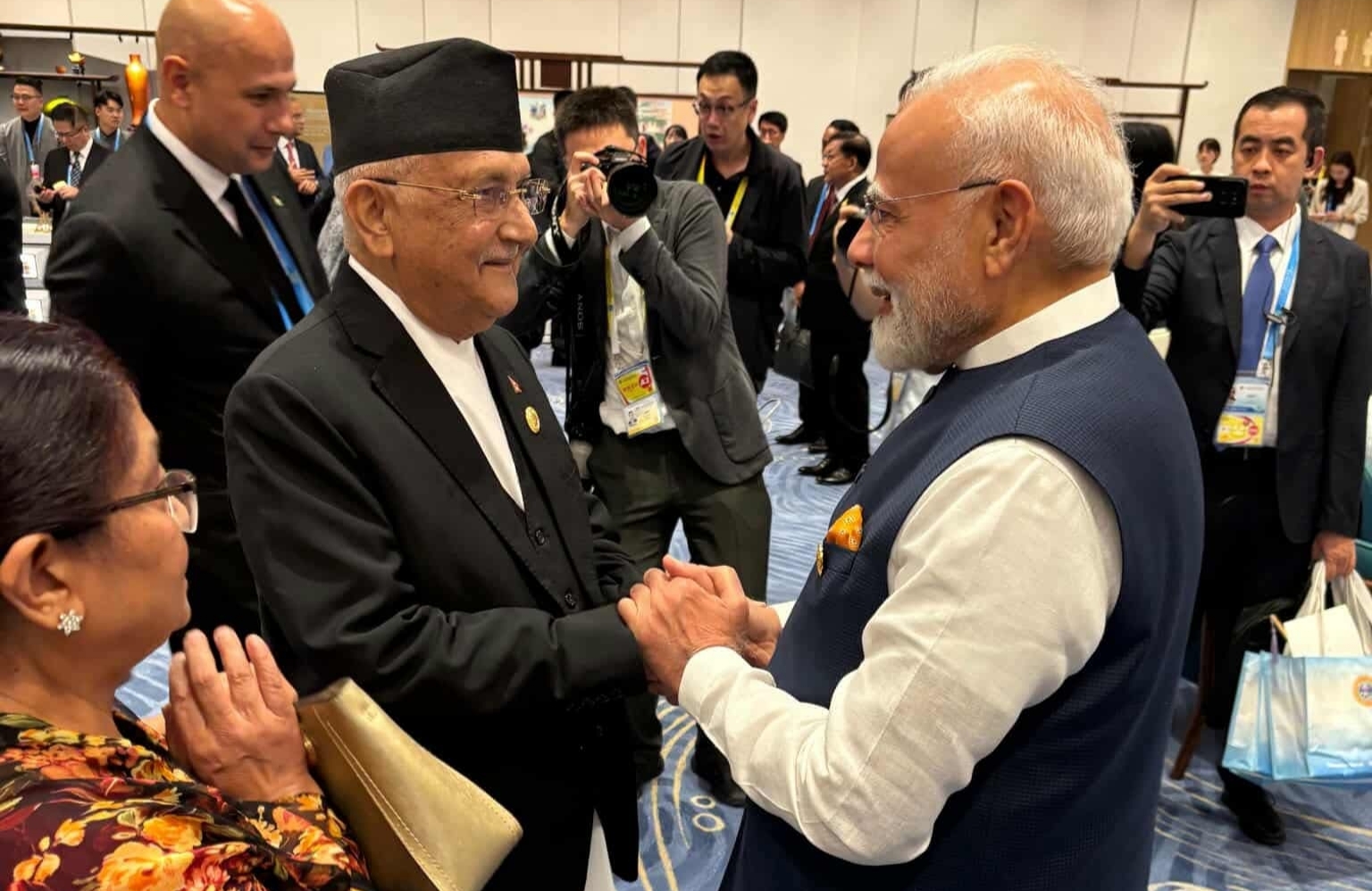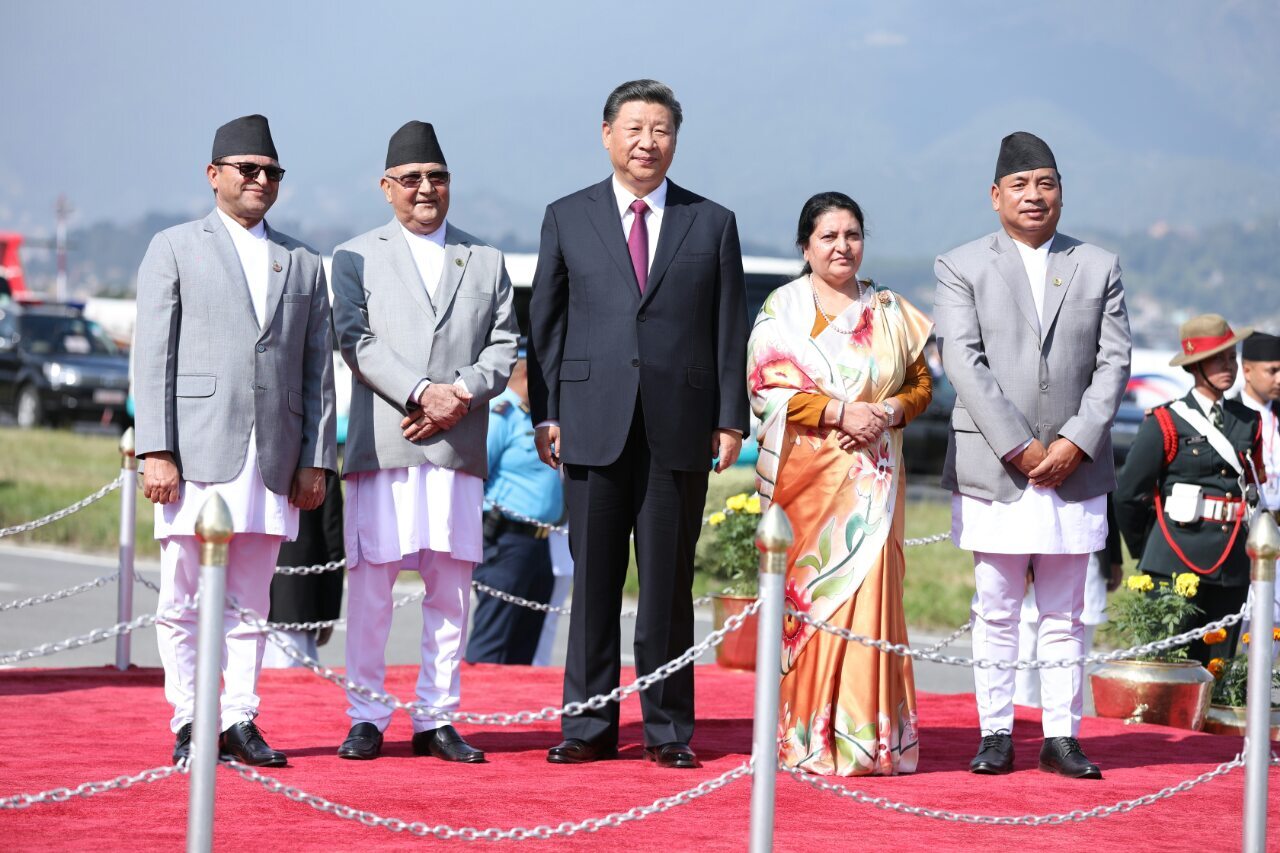

KATHMANDU: Being a landlocked nation, connectivity with the outside world has always remained a priority for Nepal. With the rapid development of neighbors like India and China, Nepal’s connectivity priority is to connect with both neighbors through a railway network and convert its geographical position into strategic and economic advantages. However, due to the geopolitics swirling around this project, divided domestic politics, as well as the changing priorities of neighboring countries, the suspicion has arisen that the Nepali dream of a railway might just be limited to a ‘lollipop.’
My article will focus on this very suspicion.
The rise and expansion of the train line dream
Despite Nepal’s landlocked status and economic challenges, the expansion of trainline transport remains a distant prospect. Even when the railway expanded during the British rule in India and was running close to Nepal’s border, the railway network could not spread to this side, except for one or two places. For example, a 39-kilometer railway from Raxaul, India, to Amlekhgunj, Nepal, was built back in 1923.
Even without the development of a railway in Nepal itself, the railway is not only familiar but also popular among Nepalis. Those who go from the hilly region to various places in India to work and study remember many stories and anecdotes of the Gorakhpur Railway and the Nautanwa Railway. Songs and music describing and praising the Darjeeling Railway and the classic steam engine mountain train line demonstrate a long attachment and fascination with the train.
As internal transportation infrastructure developed, Nepal also began to plan for railway development for public transport, but it was limited only to the Terai. In the course of planned development, the East-West Railway Project and the plan to connect various Terai cities such as Birgunj, Biratnagar, and Nepalgunj to the Indian railway network were key. The Cabinet meeting of 2005 seems to have decided to develop the East-West Railway. Nepal’s then-Terai-focused railway system expansion plan also seems to align with India’s neighbor policy focused on connectivity. In 2006, then-IndianForeign Secretary Shyam Saran had said that they are establishing new links between important border cities of India and Nepal and upgrading the existing links.
It is noteworthy that when the initial debate about railway expansion in the Terai was underway, Nepal had not even imagined connecting the hilly or Himalayan regions, as well as the northern neighbor, through a railway system. However, in 2006, China expanded its train line network to Lhasa through the Tibetan Plateau, which has a geographical ruggedness almost like Nepal’s. This railway, the highest in the world, motivated the start of the debate in Nepal about railway network expansion toward the north.
The arrival of the train line in Lhasa created a debate in Nepal about the possibility of a northern railway, mainly with two arguments. First, the development of technology and engineering proved that traversing hilly or Himalayan regions with a railway network was no longer an impossible subject. This strengthened the hope of being able to connect with trans-Himalayan China also via train. Second, it also presented the possibility of establishing reliable connectivity not only with China, which is in the race to become a world power, but also with the vast world, such as Japan, South Korea, and West Asia, through a modern and reliable trainline network.

An informal meeting between then Prime Minister Oli and his Indian counterpart Narendra Modi on the sidelines of the SCO summit. Photo Courtesy: Narendra Modi’s X
As the train line was coming to Lhasa from 2006, the Chinese side appears to have repeatedly announced to Nepali representatives since then that there was a plan to extend the particular railway all the way to the Nepal-China border via Shigatse, the second largest city in Tibet. It is seen that the then-Chairman of the Government of the Tibet Autonomous Region, Qiangba Puncog, made such an announcement to Deputy Prime Minister and Foreign Minister K.P. Sharma Oli, who was on a visit to China in 2006. This transformed the abstract possibility of a northern railway into a concrete and imminent possibility among Nepalis. Some media reports and studies published around 2008 indicated that a conceptual agreement was reached between Nepal and China to expand such a network in 2008 itself and that China planned to complete the extension of the train line network up to the Nepali border by 2013.
The most significant wave for the northern railway network came with the launch of Chinese President Xi Jinping’s ambitious Belt and Road Initiative (BRI) in 2013. This connectivity-focused project was taken in Nepal as the development of the Nepal-China railway under the concept of Trans-Himalayan Connectivity, and Nepal enthusiastically announced its participation in the BRI.
Thus, the BRI initiative boosted Nepal’s aspiration for a train line network with China. Public debates and discussions advanced about the benefits the railway would bring. The railway was depicted as a path to unprecedented economic growth, tourism development, and strategic diversification. The blockade imposed by India on Nepal in 2015 also brought the dream of a northern railway into the debate from the angle of strategic compulsion, which played a role in building strong public opinion that the development of the northern railway network was not just an aspiration but necessary for national sovereignty and security.
Along with external factors, Nepal’s internal political developments also nurtured the dream of a railway network. The political change of 2008 not only internalized achievements like a republic, federalism, and secularism but also advanced the aspiration for modernity, development, and prosperity. In this aspiration, there was the narrative that Nepal should become a bridge between rising India and China and benefit from the development of both countries. The trans-Himalayan railway was considered essential for Nepal’s transformation. Consequently, railway projects with both China and India emerged as important political projects. They were significantly included in the election manifestos of major political parties starting from the 2008 Constituent Assembly election. These commitments proved important in gaining public support.
Despite intense enthusiasm and repeated commitments, the proposed railway projects from both China and India are still limited to the initial stage. It can be felt that the various tensions and delays have turned the public’s hope and enthusiasm for this project into disappointment.
Along with external factors, Nepal’s internal political developments also nurtured the dream of a railway network. The political change of 2008 not only internalized achievements like a republic, federalism, and secularism but also advanced the aspiration for modernity, development, and prosperity.
Geopolitical tug-of-war
The biggest obstacle to the railway delay in Nepal is the increasing geopolitical rivalry between India and China. When China proposed the BRI in 2013, it was expected that India would cooperate in this project. However, India not only refused to join this initiative but also interpreted it as being against its interests. Asserting that the expansion of the BRI in South Asian countries like Nepal, Sri Lanka, Maldives, and Bangladesh is a strategic encroachment by China into its traditional sphere of influence and a debt trap, India seems keen to stop BRI projects as much as possible. Since the Trans-Himalayan Railway is an important part of the BRI, and India is clearly trying to stop it, this project has become a victim of geopolitical competition.
Around 2006, when there was talk of connecting Nepal with the railway system from Lhasa, India opposed it, citing security concerns. While discussions on railway network expansion between Nepal and China continued, India also intensified its efforts to stop the project. It is estimated that it used strategies such as pressuring the Nepali government not to proceed with the Chinese project, promoting a narrative against the BRI and the northern railway project, and collaborating with friendly forces within Nepal to fragment the national consensus regarding the Chinese railway network.
Indian author S.D. Muni argues that to stop the Chinese influence in Nepal, India has moved beyond its traditional policy and is proceeding with a policy of cooperation with mutual-minded powers like the United States and Japan. Along with this, India also put itself in the geopolitical race to bring the railway system up to Kathmandu and put forward a plan to extend the train network from Raxaul to Kathmandu in 2018.
Around 2006, when there was talk of connecting Nepal with the railway system from Lhasa, India opposed it, citing security concerns. While discussions on railway network expansion between Nepal and China continued, India also intensified its efforts to stop the project.
Internal politicization and lack of consensus
The geopolitical tug-of-war regarding connectivity between China and India also influenced Nepal’s internal politics. The railway project became drastically politicized. Earlier, there seemed to be a general consensus among the major national political forces on the railway network with China. However, after the train project was linked to the BRI, it became an integral part of the connectivity competition. As a result, the internal political landscape for viewing the project also became cleaved and diverged.
Various political parties and factions began to align themselves with Indian or Chinese interests, which weakened the national consensus on railway network development. This polarization has played a role in causing delays in the railway project’s decision-making process and a lack of sustained commitment, weakening the possibility of project implementation.
China-related expectations vs. reality
The traditional perspective we have on China also seems to have caused disappointment regarding railway network development. The general Nepali understanding is that the gentle and supportive China will build factories and roads, among other things, in Nepal with its own investment. At the same time, China is also known among Nepalis as a country capable of rapid development and construction, which is also praised as Chinese speed.
When China advanced the BRI project, many understood that China itself would invest and carry out the development and construction under the project. This understanding made Nepalis positive towards the BRI. However, suspicion has grown after China did not demonstrate helpful behavior in the railway project that aligned with Nepal’s prosperity.

The then President Bidya Devi Bhandari, Prime Minister KP Sharma Oli and others bid farewell to the visiting Chinese President. Photo: Ministry of Foreign Affairs
Different objectives and lack of mutual benefit
Another significant factor strengthening the suspicion is the different objectives and strategies of Nepal and China in the Trans-Himalayan railway network expansion. Nepal’s interest is primarily driven by the desire for economic diversification toward China and a reduction of dependency on India, whereas China probably wants to expand connectivity through the railway network to other South Asian countries, especially the Indian market. It is noteworthy that in the Chinese railway network plan, Nepal is not the destination; it is just a means to enter India.
This can also be confirmed by the fact that in the trilateral connectivity expansion discussions between India, Nepal, and China until the first decade of the 2000s, China seemed optimistic that India would facilitate the Chinese railway network expansion. However, as discussed above, with the increasing competition and tension between India and China and China’s BRI announcement in 2013, India intensified its efforts to stop the railway rather than facilitate it. Given the Indian obstruction, there does not seem to be much strength in the idea that Beijing would readily agree, as the railway would be extremely expensive solely for Nepal’s desire. Therefore, China has neither the compulsion nor the urgency to operate the railway right now just for Nepalis.
China currently appears to be in a surveillance mode position regarding railway network expansion, especially waiting for favorability with India.
Nepal’s interest is primarily driven by the desire for economic diversification toward China and a reduction of dependency on India, whereas China probably wants to expand connectivity through the railway network to other South Asian countries, especially the Indian market.
Conclusion
The delay and tension surrounding Nepal’s national aspiration to connect with India and China through a railway network is an aspiration that sprouted with the desire for diversification in dependency, modernity, development, and prosperity, which have exposed the fact that the railway network reality is much more complex than our desire. The tendency to view cross-country railway lines and similar projects not merely as development efforts but as strategic components has led Nepal’s train line aspiration to become entangled in geopolitical competition. Due to geopolitical effects, Nepal’s internal politics are divided, and the national consensus on the railway is also weakening.
In short, even though internal desire plays a role in the construction of a railway and the building of a national aspiration, the delay is understood to be due to factors such as the increasing geopolitical friction at the international level, the ambitions of India and China that are spreading beyond South Asia, and the gap between commitment and delivery. Therefore, we must be clear: if we continue to be wishful toward China and India in the same old way, ignoring the geopolitical reality, it will not be a train line but disappointment that increases with equal intensity for Nepalis.
– Bhandari, a Ph.D. in International Relations (IR), maintains a special interest in South Asian geopolitics.